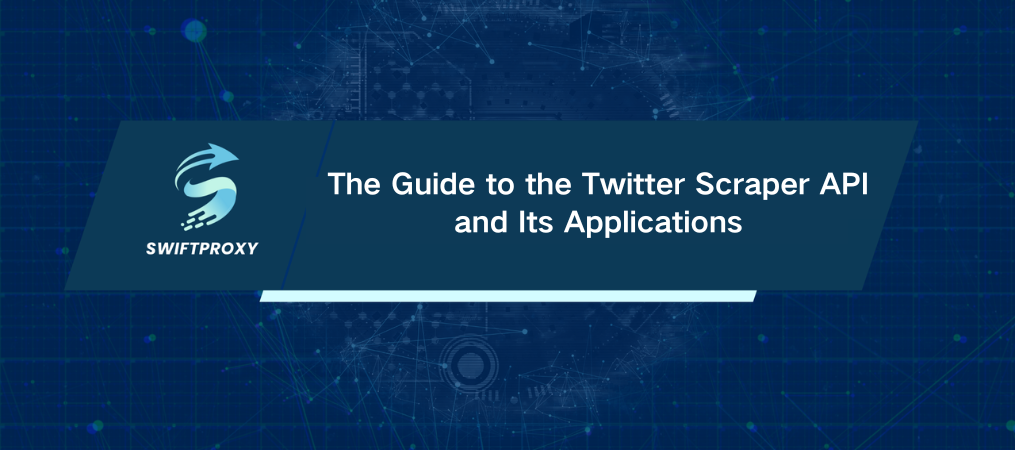The Guide to the Twitter Scraper API and Its Applications

In the realm of social media analytics, Twitter is a treasure trove of insights. A staggering 500 million tweets are sent every day! Harnessing this data can give you the edge in market research, sentiment analysis, and trend tracking. Let's dive into the Twitter Scraper API and discover how to unlock this potential effectively.
Unlock User Insights with Twitter Username Scraper
The Twitter Scraper API is your go-to tool for extracting public user data—think usernames, bios, followers, and followings. This feature is a game-changer for influencer analysis and audience profiling. Want to understand your competitors better? This tool provides the critical data you need!
Scraping Without the API
Not keen on using the official API? No problem! You can employ web scraping techniques, but be cautious. This often requires proxies to avoid rate limits and potential IP blocks. It’s not as straightforward, but the results can be rewarding.
Explore Third-Party Twitter Scraping Tools
There’s a plethora of third-party tools that simplify Twitter data scraping. Many offer user-friendly interfaces and advanced features for extraction, processing, and visualization. They save you time and energy, allowing you to focus on analysis rather than technical hurdles.
Python Libraries for Custom Scrapers
For Python enthusiasts, libraries like Tweepy and Twint are invaluable. They provide robust functionalities for accessing Twitter data programmatically. Want to build a custom scraper? These tools can help you create one that meets your specific needs.
Master the Twitter Scrape API
The Twitter Scrape API features endpoints for fetching tweets, user profiles, and even media content. Developers can harness this to craft tailored applications that generate insightful analyses. The potential here is massive!
Safeguard Against Rate Limits with Proxies
To sidestep rate limits and IP blocking, using proxies is essential. They distribute requests across multiple IP addresses, significantly reducing your risk of being blocked. Choosing reliable and secure proxies is a must!
Optimize Your Proxy Selection
When scraping Twitter, a diverse range of proxy services is available. Evaluate options based on reliability, geographic locations, and speed.The right proxy can make a world of difference in your scraping efforts.
Dive into Media Scraping
The Twitter Scraper API also allows you to extract media—images, videos, GIFs. This is crucial for content analysis and multimedia research. Want to analyze how media impacts engagement? This feature is invaluable!
Harness Hashtags for Deeper Insights
The API lets you scrape tweets tied to specific hashtags. This is perfect for monitoring trends and analyzing campaigns. Understand what's buzzing in real time, and use that data to stay ahead!
Lead Generation with Email Scraping
Extracting emails from Twitter profiles can supercharge your outreach efforts. However, remember to comply with Twitter's data policies and privacy regulations. Ethical scraping is key!
Evaluate API Options
When selecting a Scraper API, compare performance, reliability, and customer support. User testimonials can provide insights that guide your choice. Find the solution that best fits your unique requirements.
Consider Proxy Management Features
Some scraper APIs include built-in proxy management. This feature simplifies the setup process and enhances data extraction reliability. If you're serious about scraping, consider this as a significant advantage.
Explore Online Scraping Services
Not all scraping has to be technical! Online services provide web-based Twitter scraping tools that cater to all skill levels. These platforms often include real-time data retrieval and visualization capabilities, making your life easier.
Expand Beyond Twitter
While our focus is on Twitter, similar techniques apply to other platforms like Instagram. The Instagram Scraper API offers robust features for accessing public data. If you're looking to expand your analysis, don't overlook this opportunity!
Conclusion
This guide outlines the essentials of the Twitter Scraper API and related tools. Whether you're a developer, data analyst, or business user, these strategies will help you navigate Twitter's vast data landscape. Embrace these tools, and watch your insights flourish!

















































